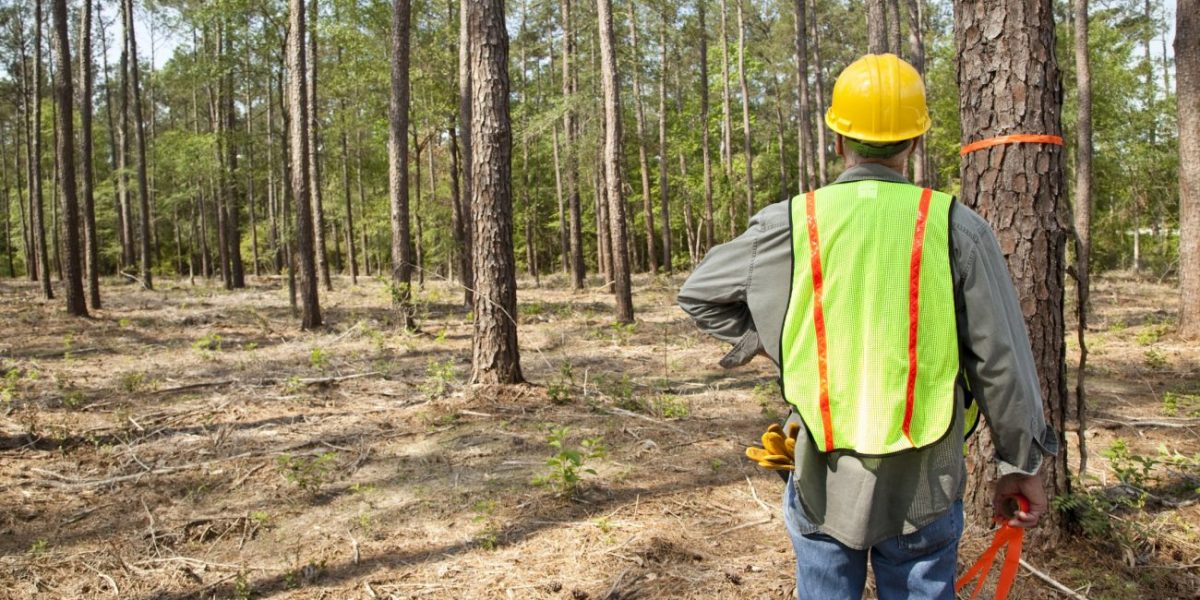A news report from a Dutch public television program, EenVandaag, cites an anti-forestry activist who claims that the harvesting of fiber for renewable wood bioenergy contributes to deforestation in the US Southeast. Unfortunately, this report failed to accurately portray the relationship between demand for wood pellets for bioenergy and forest size and growth.
The findings of leading researchers from around the world are clear: the markets supported by wood bioenergy protect and grow forests, rather than shrinking them.
To see why this is the case, we need to examine the role that markets play in determining the forest acreage in areas like the US Southeast, where much of the supply for sustainable wood pellets is concentrated, and where 56 percent of forest acreage is held by private landowners.
It is important to note that forest land in the US has increased since 1953, even as the forest products economy has expanded. As Thomas Straka, a Professor of Forestry and Environmental Conservation at Clemson University, explains, “Vibrant timber markets … lead forest owners to actively invest in sustainable forest management.” By strengthening the market for wood products, wood bioenergy incentivizes landowners to plant more trees and disincentivizes them from converting their land to more carbon-intensive uses, such as development or cattle ranching. The net result is that more trees are planted, growing the carbon sink.
This is why leading international bodies like the United Nations IPCC have affirmed that sustainable forest management aimed at providing forest products “can lower GHG emissions” by expanding the size of forests.
Wood bioenergy is a small part, about 3%, of the overall forest products industry’s annual harvest in the U.S. Southeast. This means that wood bioenergy contributes a small percent to sustainable forest harvests, which primarily go to other wood-based industries, such as paper and lumber. Wood pellets provide additional revenue in a low-margin business. It strengthens the market for lower-value wood, and this increased demand for lower-value wood increases the economic return landowners can get from planting trees. While wood bioenergy does not drive overall harvest decisions, it does encourage more investment in forests – and that is a win-win for local economies as well as the climate.
This phenomenon – that increased demand for forest products expands forest sizes in the US – is well-documented and has been confirmed by leading researchers.
Researchers from Utrecht University, North Caroline State University, the University of Munster, and the University of Groningen found in 2017 that high-demand scenarios for wood pellets retain thousands of square kilometers of forests. The Society of American Foresters agrees, with their research finding that an increase in wood bioenergy “will not reduce forest and forest carbon stocks, but rather will increase the forest and forest carbon.”
In fact, a separate study from leading researchers at institutions such as the University of Minnesota, North Carolina State University, the US Forest Service and others found specifically that “the demand for wood keeps land in forest, provides incentives for expanding forests and improving forest productivity, and supports in-vestments in sustainable forest management that can help offset the forest carbon impacts of increased demand.”
The science is clear – wood bioenergy markets increase demand for forests, which encourages private landowners to plant more trees and expand forest acreage in the US.
The Research:
Biofpr (2017): Modeling the impacts of wood pellet demand on forest dynamics in southeastern United States
Duden et al. (Utrecht University, North Caroline State University, University of Munster, University of Groningen)
Key Finding: High demand scenarios for wood pellets retain forests.
“Projections show that in the absence of additional demand for wood pellets, natural timberland area is projected to decline by 450–15 000 km2 by 2030, mainly through urbanization and pine plantation establishment. Under the high wood pellet demand scenario, more (2000–7500 km2) natural timberland area is retained and more (8000–20 000 km2) pine plantation is established.”
Clemson University (2015):Thomas Straka, Interim Department Chair and Professor, Forestry and Environmental Conservation Department, Clemson University
The State – Thomas Straka: Straka: Pellet mills will result in more S.C. forests, not fewer
Key Finding: “While some environmentalists see pellet mills as leading to forest devastation, other see a new market for what was waste wood and non-merchantable small trees. Some areas of South Carolina long have experienced limited markets due to distance from the pulp and paper mills and oriented strand board plants. Forest owners who are discouraged by poor timber markets do not tend to regenerate forests for their children and grandchildren. Vibrant timber markets throughout the state will lead forest owners to actively invest in sustainable forest management.”
Society of American Foresters (2012): Does Wood Bioenergy Increase Carbon Stocks in Forests?)
Roger Sedjo and Xiaohui Tian
Key Finding: An increase in wood biomass “will not reduce forest and forest carbon stocks, but rather will increase the forest and forest carbon.”
Society of American Foresters (2014): Forest Carbon Accounting Considerations inUS Bioenergy Policy
Reid A. Miner (NCASI), Robert C. Abt (North Carolina State University), Jim L. Bowyer (University of Minnesota), Marilyn A. Buford (USDA Forest Service), Robert W. Malmsheimer (SUNY ESF), Jay O’Laughlin, Elaine E. Oneil, Roger A. Sedjo, and Kenneth E. Skog (US Forest Service)
Key Finding: “The demand for wood keeps land in forest, provides incentives for expanding forests and improving forest productivity, and supports in-vestments in sustainable forest management that can help offset the forest carbon impacts of increased demand.”
Journal of Forestry (2019):Roundwood Use by Southern Wood Pellet Mills: Findings from Timber Product Output Mill Surveys
Consuelo Brandeis (USDA Forest Service), Karen Lee Abt (USDA Forest Service)
Key Finding: Biomass comprises around 3 percent of wood output harvests in the US Southeast.
###

